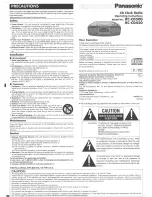
Installatio
n
Factors Affecting the Quality and Distance of the Radio Connection
37
SRL-35 Operator’s Manual
P/N: 1003224-01
The SRL-35 operates in the 450 MHz band, where man made interference is insignificant. Long distance
interference needs not to be taken into account even in special weather conditions.
The SRL-35 tolerates normal levels of interference that occur. However, exceptionally high levels of
interference can break through the safeguards and thus cause errors in data transfer. In mobile vehicle
applications the range of operation can be increased by dividing the transmitted data into e.g. 50...500 byte
long blocks and by re-transmitting the defected blocks.
A sufficient safety margin can be obtained by testing the communication path using extra 6 dB attenuation
at the antenna connection and with slightly less effective antennas than those to be used in the final
system.
Radio Field Strength
Radio signal strength must be good enough for successful data transfer. Where field strength is above a
certain level, the operational results are very good. Below this level, a few dB marginal areas occur in which
errors begin to be generated by noise and interference that will eventually lead to loss of connection.
The field strength is at its optimum level in open space, although increasing distance will still reduce it. It
must also be remembered that one open space has different environmental and external factors to
another, and that the effects on transmission quality must be taken into account when planning the system.
Ground, ground contours and buildings cause attenuation (loss of energy through absorption) and
reflection of radio waves. Buildings reflect radio waves and therefore the affects of attenuation are not as
acute when transmission is over a short distance.
However, the reflected waves will often be a bit delayed, and when they combine with the direct radio
waves they interact in either a weakening or a strengthening way. This causes the fading effect in mobile
systems. In reality very sharp signal drops spaced about 35 cm apart may occur. The attenuation may even
reach 40 dB, normally less.
















































